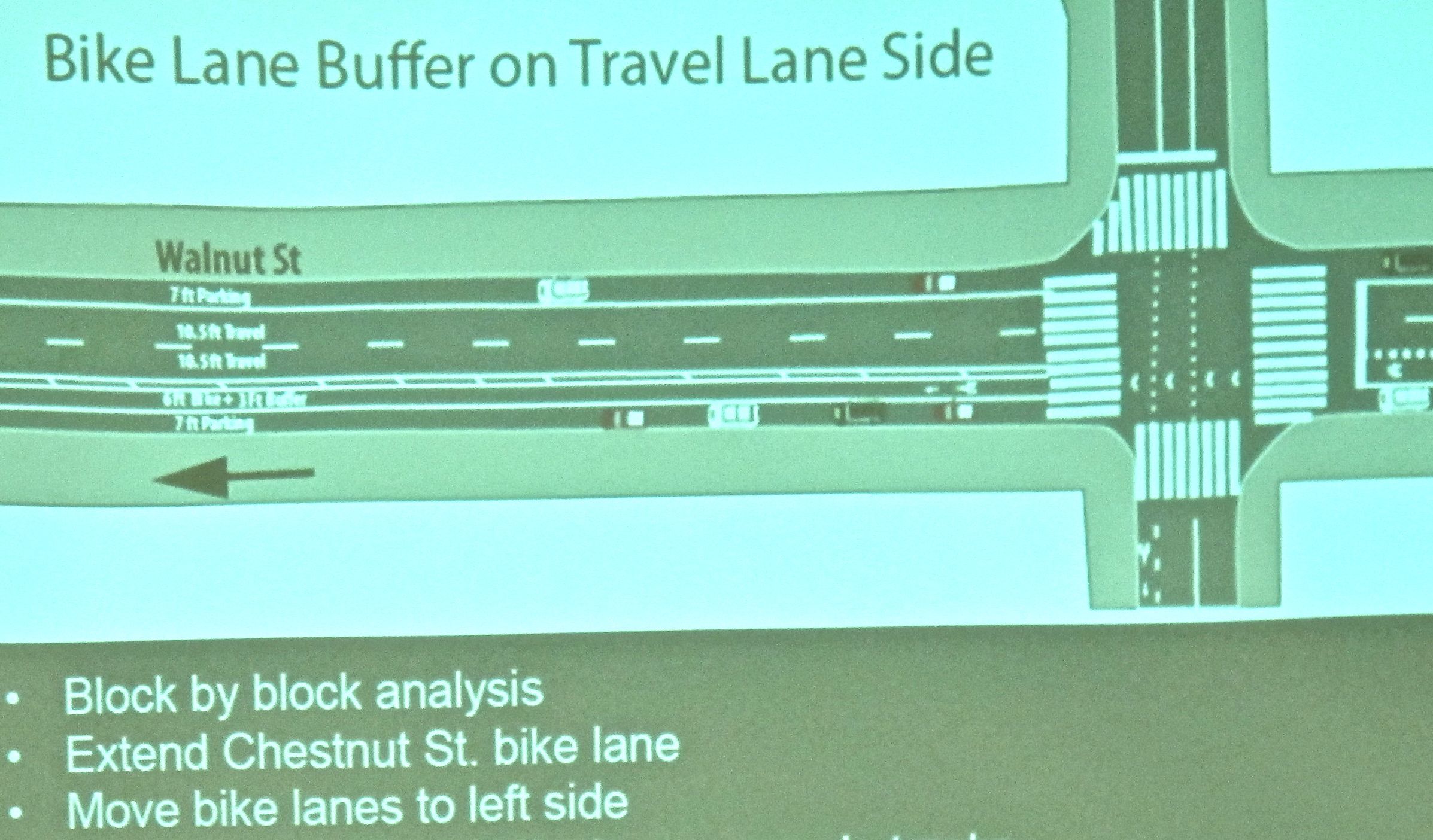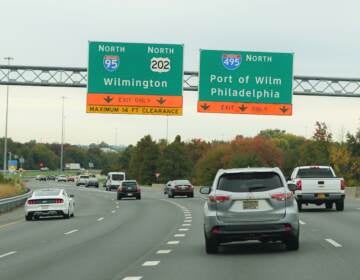Second phase of plan aiming to boost walking, bike riding in Philadelphia presented to planning commission

The second half of Philadelphia’s first plan to make streets safer for bicyclists and pedestrians was presented to the city planning commission Tuesday.
The first half of the plan, covering Northwest Philadelphia, North Philadelphia, Center City and South Philadelphia, was adopted by the commission in 2010. See previous coverage. The Commission will take action on Phase II at a future meeting.
Phase II, covering West Philadelphia, Southwest Philadelphia, Olney/Oak Lane, Northeast Philadelphia and the River Wards, uses the same design concepts and street classifications to reach the same five goals: Improving safety for pedestrians and bicyclists. Encouraging biking and walking to promote better health and boost revenue for businesses in walkable, bikeable neighborhoods. Promote sidewalks and streets as enjoyable public space. Filling in the gaps between existing biking and walking networks. Garnering recognition for Philadelphia as a great city for cyclists and pedestrians.
“Having a walkable and bikeable city helps us attract tourists and new residents, helps reduce air pollution, and helps make us healthier,” said Senior city planner Deborah Schaaf, who gave commissioners the Phase II overview. Multiple studies have shown a relationship between increased physical activity and reduced risk of heart disease and other chronic diseases.
Currently, walking trips make up 26 percent of all trips in Philadelphia, second only to car trips, Schaaf said. Bicycling trips make up a much smaller percentage, but the number is growing fast.
Not every street will be changed to accommodate bicycles, and for those for which change is recommended, there are a number of different approaches, Schaaf said. For example, in some cases, bicyclists will have designated lanes on both sides of the street. But some streets are two narrow for that approach, and instead, signs will be used to remind motorists that they must share the road with cyclists.
The plan won’t be implemented all at once, but rather, the called-for biking- and walking-related improvements will be done gradually, as part of other street projects.
“One of the most important issues in Phase II is improving connections between Center City and University City,” Schaaf said.
Bicycle use in both of these areas is high, she said, but improvements that would allow cyclists to travel more easily between the areas are needed.
Phase II makes recommendations for bicycle and pedestrian improvements along JFK Boulevard, Market Street, and 30th Street Station.
“Between 15th and 20th Streets, these streets consist of one-way streets with four travel lanes each, plus parking lanes,” the plan states. “It would be desireable to remove some of the highway capacity to improve the streets for all roadway users, especially pedestrians.”
During her presentation, Schaaf said the Streets Department last year did a test, providing left side, one-way cycle tracks on each street, and found no detriment to current motor vehicle traffic. The plan says another possible approach “would be to provide a two-directional cycle track on JFK and other, roadway narrowing enhancements on Market Street.”
West of 20th Street, the one-way portions of each street end. “JFK Boulevard extends for over 2,000 feet, to 30th Street Station, with no traffic signals to control vehicle speeds,” the plan states. “Very little traffic flows eastbound. PennDOT si developing plans to reconstruct the decks of bridges that take JFK over 21st, 22nd and 23rd streets, the plan states. “As part of that project, a variety of measures should be available to accommodate a two directional cycle track or sidepath.”
An initial analysis shows there is sufficient room around 30th Street Station to extend a two-directional cycle track around the north side of the facility. “Additional work with stakeholders in the area would be required to confirm that the project would be feasible,” the plan states.
West of 30th Street, Drexel University and the PHiladelphia Water Department are considering a number of projects along JFK Boulevard between 30th and 32nd streets that would allow a bicycle facility to continue at least that far west.
Pedestrian connections are also missing around the city. In fact, there are places where sidewalks that should be there are literally missing. The plan identifies 61 miles of high-priority missing sidewalk, 86 miles of medium priority, and 133 miles of low priority.
Schaaf showed a slide illustrating that this isn’t just a private property owner issue. A large percentage of the high-priority missing sidewalks are actually the responsibility of the city or another public entity, Schaaf said.
The Bicycle and Pedestrian Plan is available on line. To downloaded, go to the PCPC website, here.
Phase II was funded by grants from the Department of Health and Community Services and Get Healthy Philly, and from the Delaware Valley Regional Planning Commission.
Commission Chairman Alan Greenberger praised the plan, saying it was “extremely well done” and had “the right balance of needs in a city in which space is limited.”
Reach the reporter at kgates@planphilly.com.
WHYY is your source for fact-based, in-depth journalism and information. As a nonprofit organization, we rely on financial support from readers like you. Please give today.






